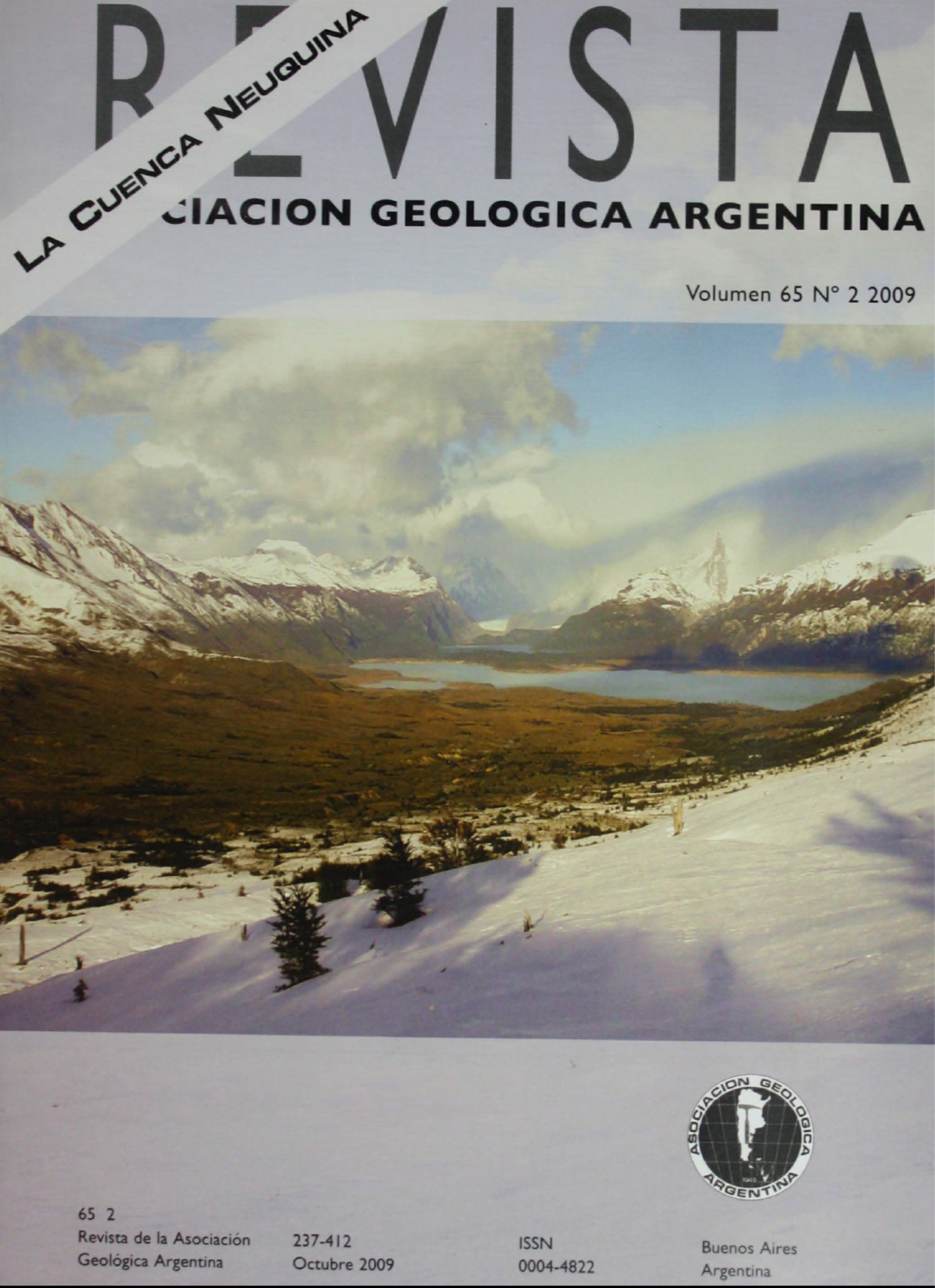Estudio paleomagnético del jurásico marino de la Cuenca Neuquina: correlación magnetoestratigráfica del Jurásico Inferior y una nueva curva de deriva polar aparente para América del Sur
Contenido principal del artículo
Resumen
El estudio paleomagnético se llevó a cabo en cinco secciones del Jurásico Inferior de la cuenca Neuquina, conformadas por cientos de metros de rocas fundamentalmente sedimentarias portadoras de amonites y en forma subordinada, rocas volcánicas. Los perfiles muestreados se encuentran en el norte a lo largo del río Atuel (Hettangiano al Toarciano) y en el centro (Pliensbachiano al Toarciano) de la cuenca. A partir del análisis paleomagnético y petrográfico, se reconocieron dos componentes magnéticas portadas por titanomagnetitas, una blanda cuya dirección es muy semejante a la del campo dipolar de la región, y otra dura que se interpreta como la original jurásica de acuerdo a las pruebas de campo de estabilidad paleomagnética. Sobre la base de la sucesión de polaridades aisladas en estas secciones se elaboró una escala magnetoestratigráfica compuesta, que es la primera deesta edad para el hemisferio sur. Se identificaron 11 zonas de polaridad dominantemente reversa (JR1 a JR11) y 12 dominantemente normal (JN1 a JN12) en relación a19 zonas de asociación de amonites de la región andina que fueron a su vez, correlacionadas con las de la escala geomagnética internacional patrón. Se observa en general un buen ajuste, y la correlación entre escalas permitió asimismo estimar la edad de algunos niveles sin fósiles diagnósticos como la posición del límite Sinemuriano-Pliensbachiano en Puesto Araya, o del Pliensbachiano - Toarciano en Rajapalo. Por otra parte, se calcularon dos polos paleomagnéticos, uno para el Hettangiano-Sinemuriano (223°E, 51°S, A95=6°, N = 25) y otro para el Pliensbachiano-Toarciano (67°E, 74°S, A95=5°, N = 52). Estos, junto con otros datos compilados de la literatura, se utilizaron para construir una curva de deriva polar aparente (CPDA) de América del Sur estable para el Triásico - Jurásico tardío, que resulta muy diferente a otras curvas anteriores que mostraban al continente en una posición latitudinal prácticamente fija durante gran parte del Mesozoico. La nueva CDPA sugiere que América del Sur habría rotado en forma horaria al tiempo que se desplazaba significativamente hacia el norte. La misma forma y cronología aparece en la curva jurásica de Eurasia. Los desplazamientos latitudinales estimados a partir de los datos paleomagnéticos son sustentados por los movimientos de las faunas marinas de los hemisferios norte y sur.
Detalles del artículo

Esta obra está bajo una licencia internacional Creative Commons Atribución-NoComercial 4.0.
Nota de copyright
Los autores conservan los derechos de autor y garantizan a la revista el derecho de ser la primera publicación del trabajo licenciado según una licencia de atribución Creative Commons que permite a otros compartir el trabajo con el reconocimiento de la autoría y de la publicación en la que se publicó por primera vez.
Declaración de privacidad
Los nombres y direcciones de correo electrónico introducidos en esta revista se usarán exclusivamente para los fines declarados por esta revista y no estarán disponibles para ningún otro propósito u otra persona.

